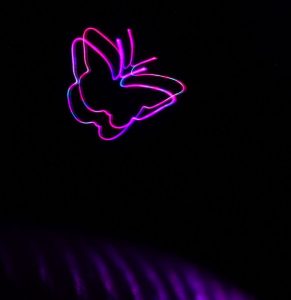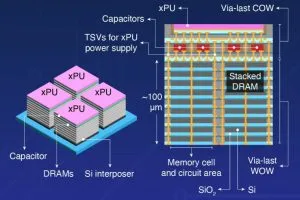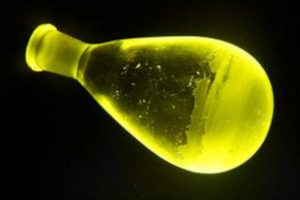
It uses a laser to trap a tiny particle of cellulose using spherical and astigmatic optical aberrations – a photophoretic particle trap – and then the same lasers drag it through 3D space at high speed.
 Vector-scan volumetric display of a butterfly. At the bottom of the image is a real fingertip for scale
Vector-scan volumetric display of a butterfly. At the bottom of the image is a real fingertip for scale
Simultaneously illuminating the particle with red green and blue light allows full-colour images to be created, with the eye’s visual persistence making the moving spot look like a line, plane or 3D object.
The result is a three-dimensional image in free space with a large colour gamut, fine detail and low apparent speckle,” said the researchers in the Nature paper ‘A photophoretic-trap volumetric display‘
“We refer to this colloquially as the Princess Leia project,” said professor Daniel Smalley, referring to the 3D display R2D2 creates in the first Star Wars film. “Our group has a mission to take the 3D displays of science fiction and make them real. We have created a display that can do that.”
Smalley explained that the R2D2 display cannot be a hologram: A holographic display scatters light only at a 2D surface. If you aren’t looking at that surface you won’t see the 3D image because you must be looking at the scattering surface to see the image.
What it is, is a volumetric display, with little scattering surfaces scattered throughout the same 3D space occupied by the image – the viewers are looking at the scattered light, which is why a volumetric image can be seen from any angle.
So far Smalley and his researchers have vector-scanned the particle to create 3D images of a butterfly and a prism, and have raster-scanned it to create something like the original Princess Leia image.
They are tiny, a few millimetres across, but impressive – watch the video here.
“While previous researchers outside of BYU have done related work to create volumetric imagery, the Smalley team is the first to use optical trapping and colour effectively,” claimed the university. “Their method of trapping particles and illuminating it with colourful lasers you can see is novel.”
 Electronics Weekly
Electronics Weekly



